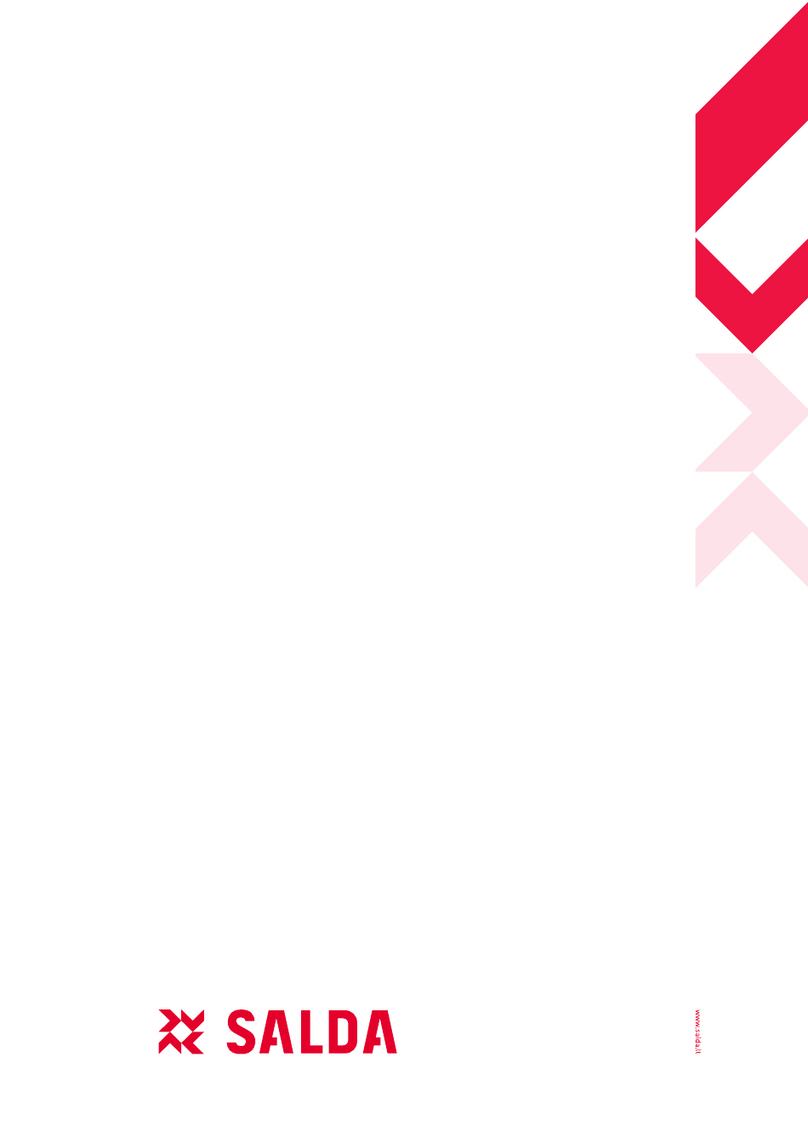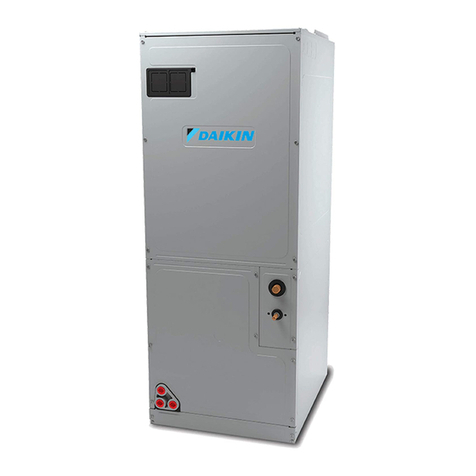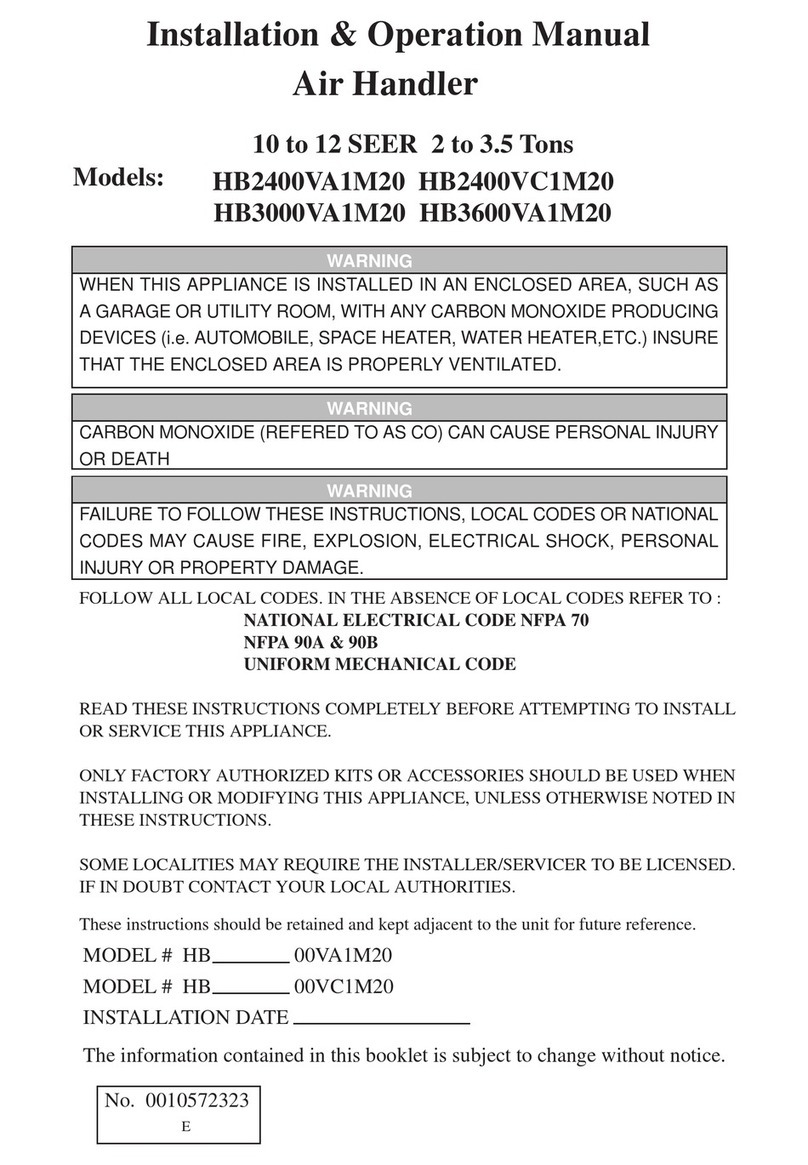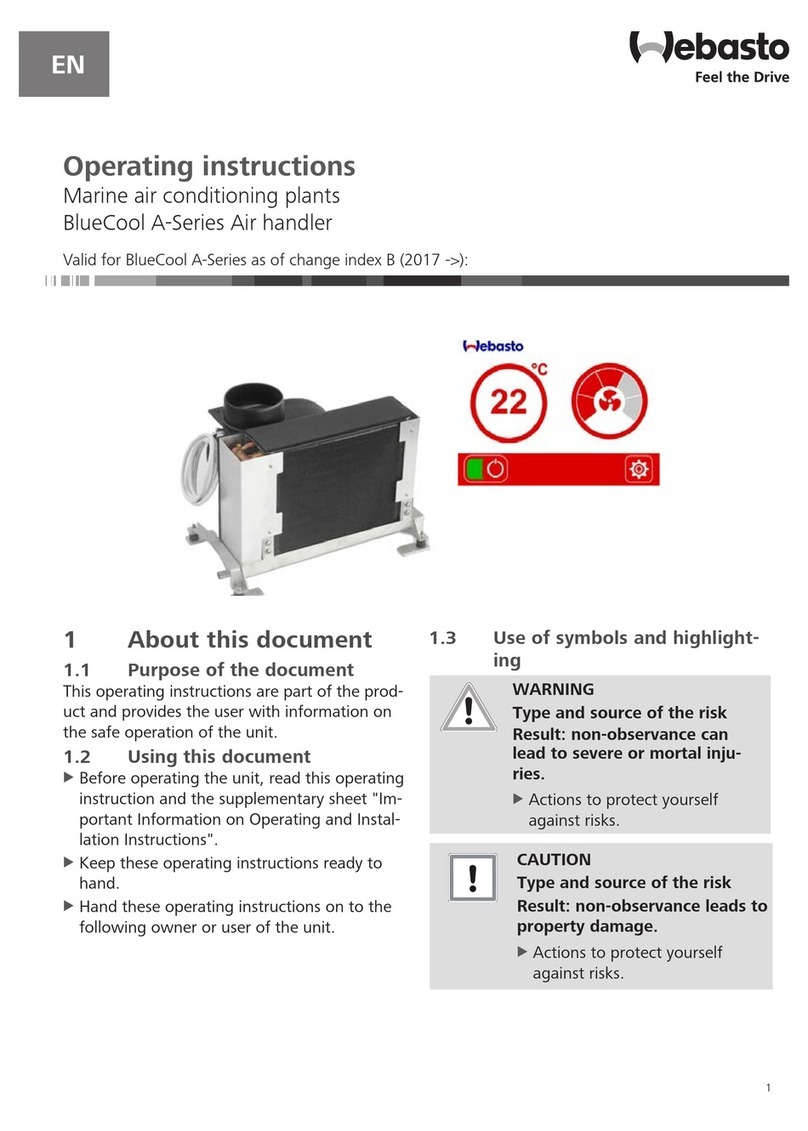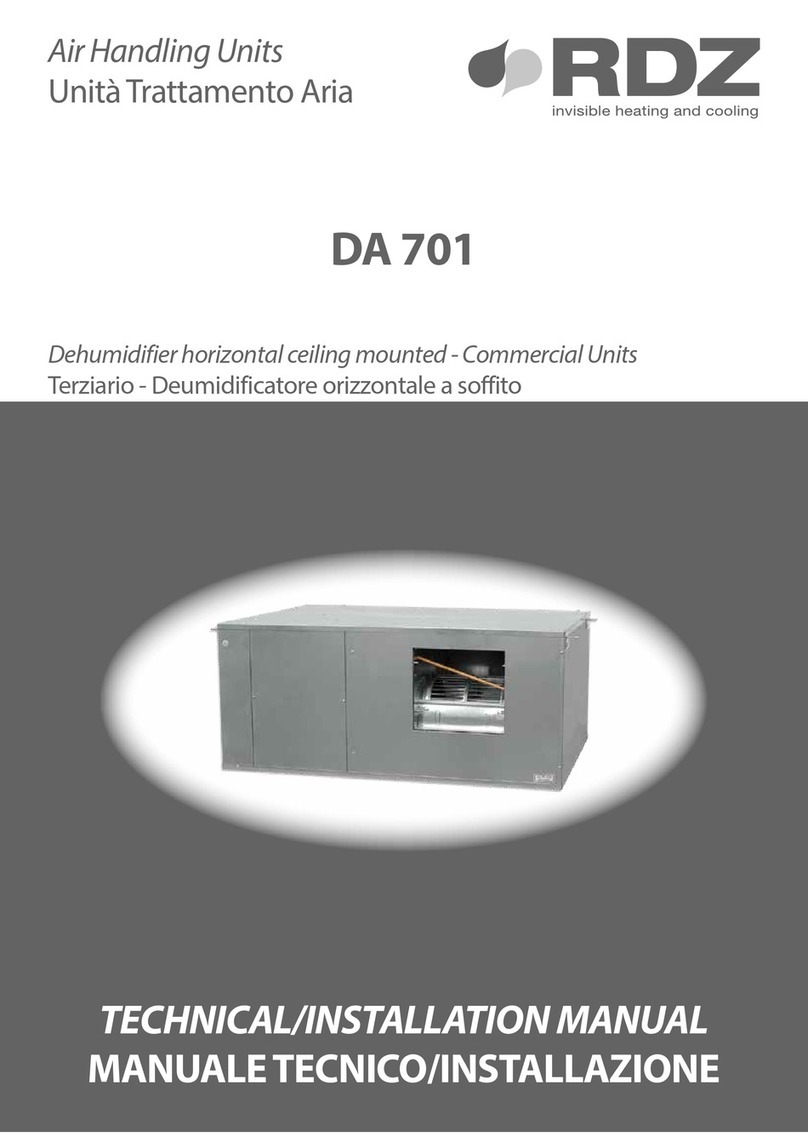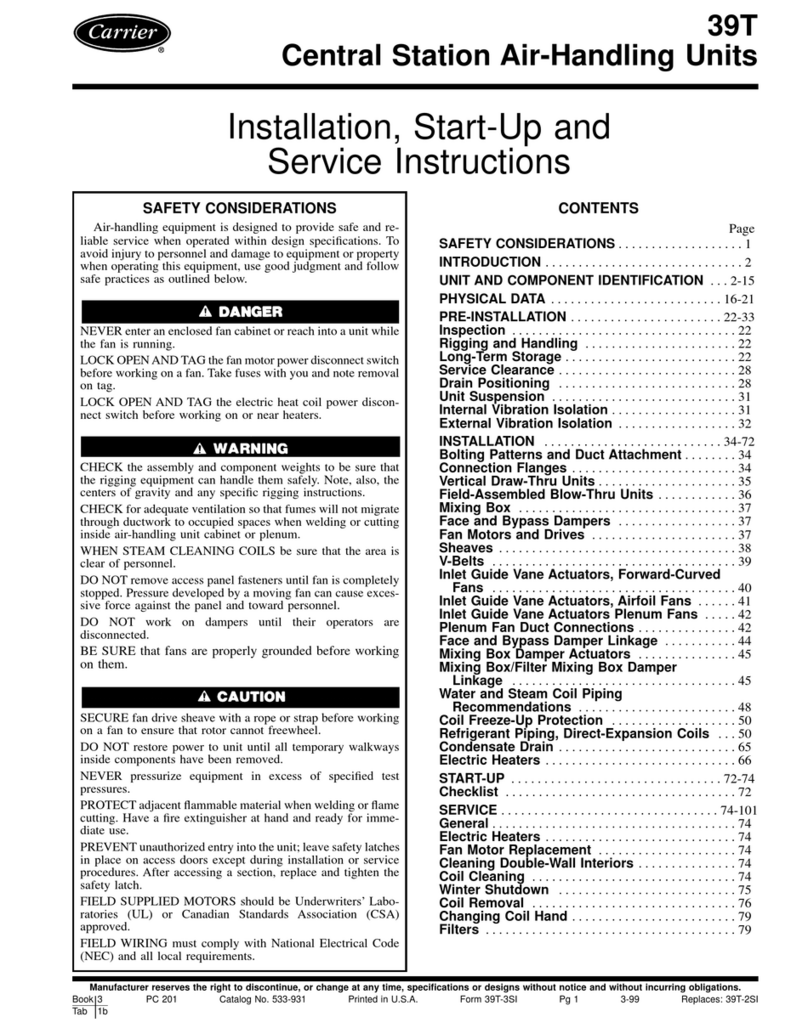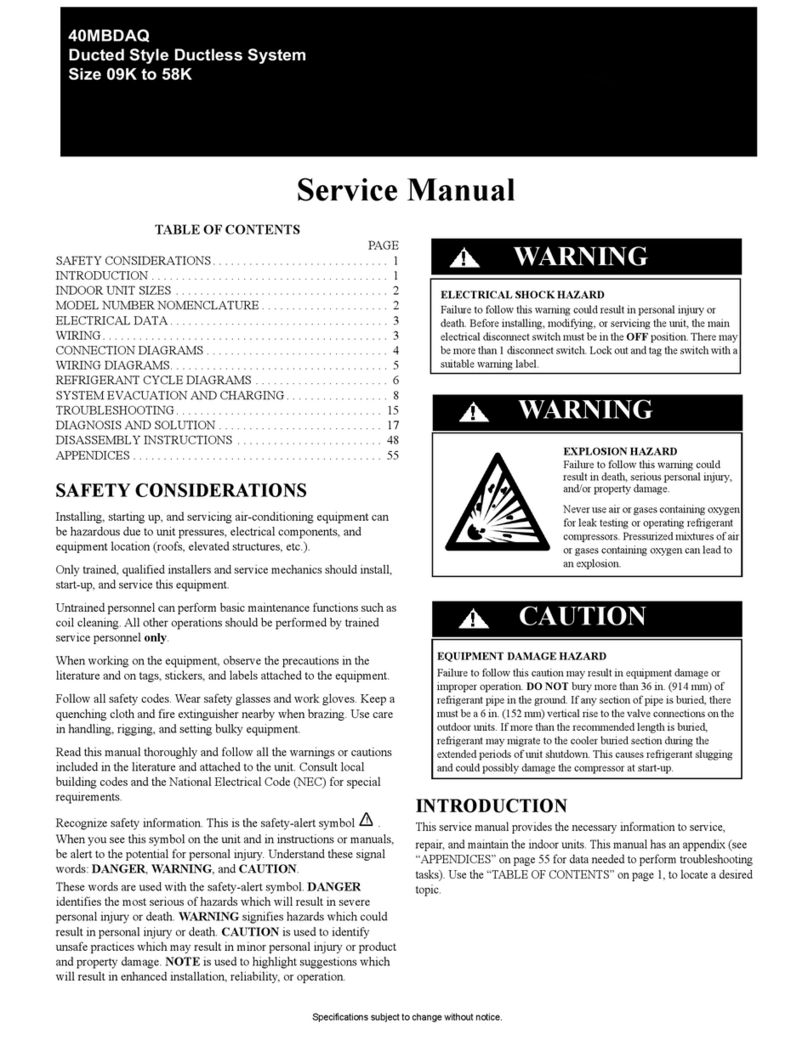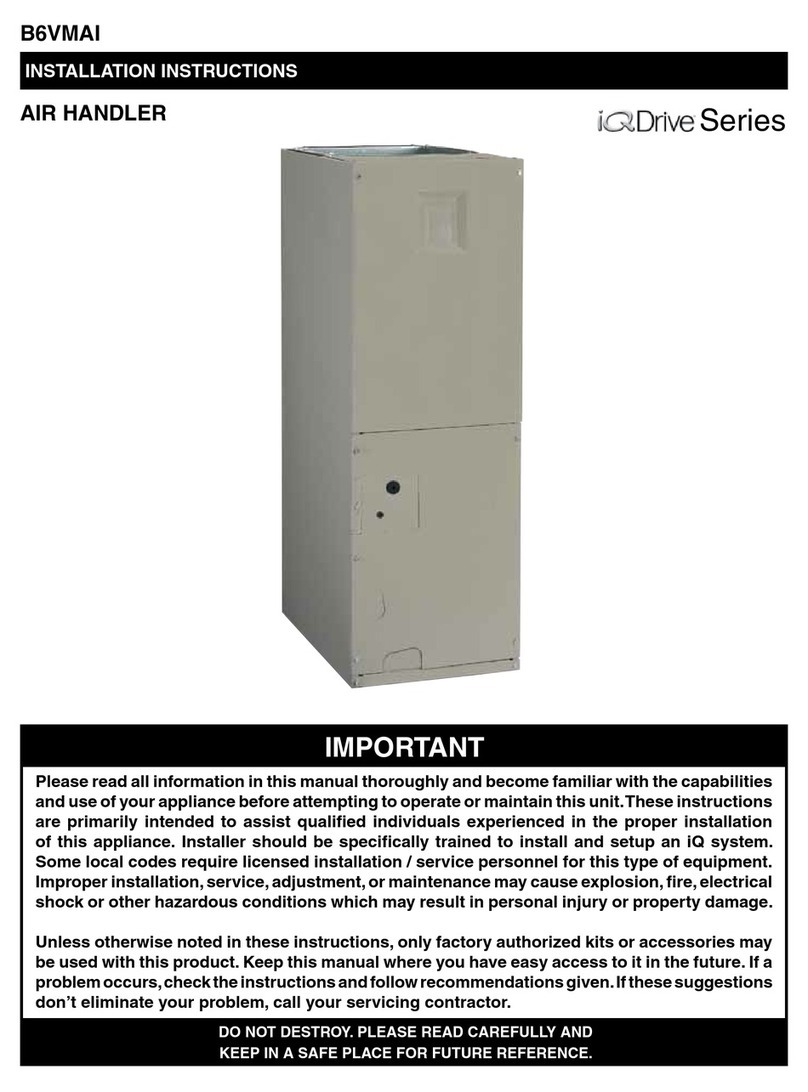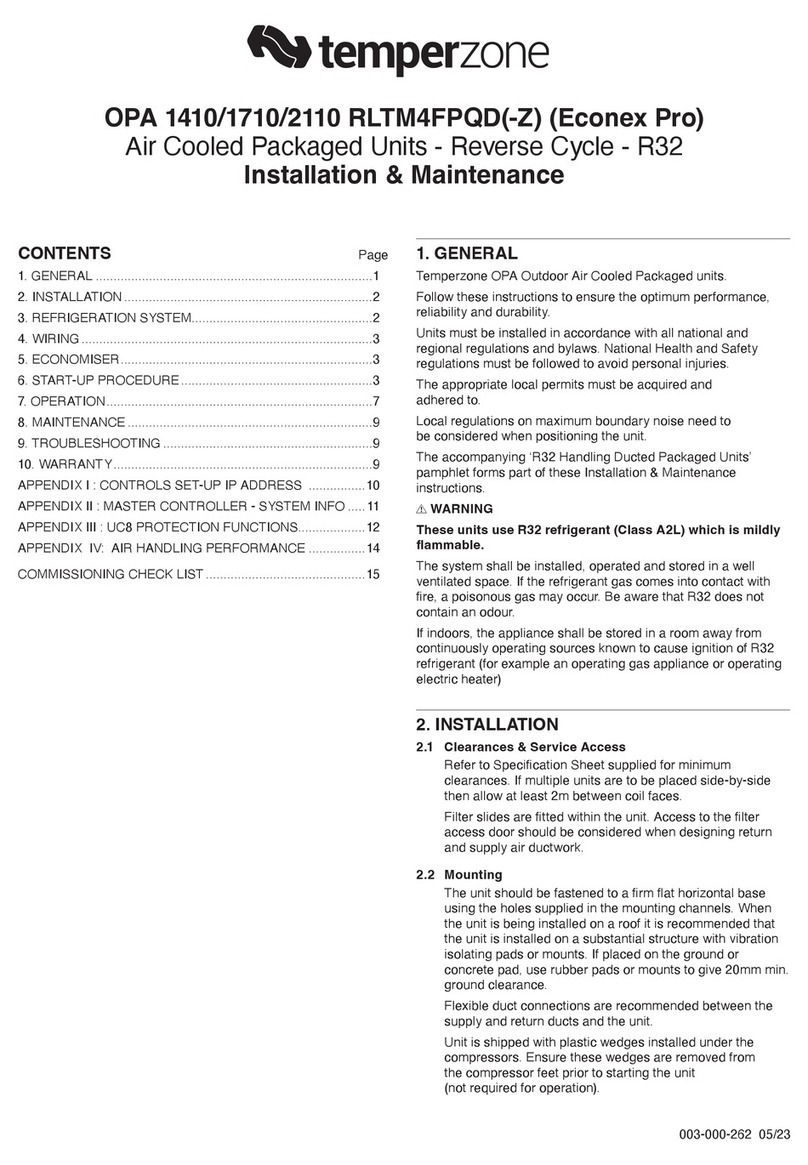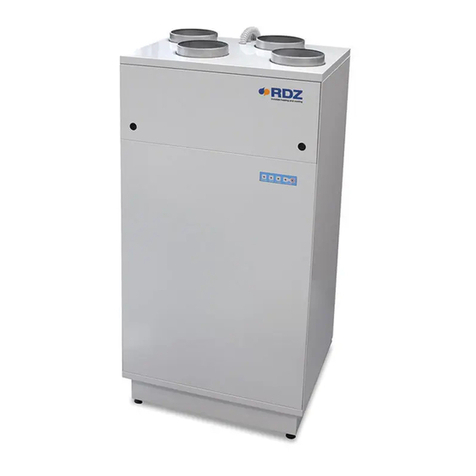
4 WILLIAMS AIR HANDLER MODELS AH / AV
START-UP
After the fan coil and piping have been installed,
pressure test for 24 hours with a minimum of 2½
times the working pressure to insure that there are
no leaks in the system. This test should be performed
prior to hanging or installation of ceilings, floor
coverings, drapes, etc. Any damage caused due to
leaks is not covered under the warranty.
WIRING
The motor must be properly wired prior to start-up.
The Wiring diagrams are provided with each unit
and/or are part of the job submittals. The warranty
on all motors is void if the motor is burned out due to
incorrect wiring. Wire used for connections to the fan
coil must be rated for at least 90° degrees centigrade.
All wiring connections must be tight. Check the rating
of the unit to determine: volts, hertz, horsepower,
phase, amps per motor, appropriate switching,
maximum circuit fuse amps, and minimum circuit
fuse amps. All wiring must be done in accordance
with applicable local electrical codes and/or standards.
BELTDRIVE UNITS
All AH and AV Models are belt drive. The adjustable
drive is set at approximately midpoint when shipped.
Prior to start-up, all pulleys must be checked for
alignment and tightness. Belts must also be checked
for proper tension which is achieved when, with
moderate pressure, the belt will not deflect more
than ½ inch in each direction from its level-position,
midpoint between the pulleys. The motor is pivoted
on the motor mounts to adjust belt tension. Make
sure the motor is properly tightened to the motor
mount after belt tension has been adjusted. Belt
tension should be rechecked every three to six
months thereafter, depending on use.
FAN COIL PIPING
INSTRUCTIONS
CHILLED AND HOT WATER COILS
PURPOSE
This data is intended to explain piping arrangements
for chilled and hot water coils to the correct inlet and
outlet locations.
TWOPIPE COILS
Two pipe coils have one inlet and outlet. Fan coils
may have one to six rows. The coil may be 100%
chilled water, 100% hot water, or with the addition of
a pipe sensor changeover control, it may use chilled
water when the chiller is operating or hot water when
the boiler is operating. A two-pipe system allows for
the chiller or boiler to operate independently, one
at a time. The pipe sensor must be clamped onto
the supply water line as close to the incoming water
source as possible. The purpose of the pipe sensor
is to sense the water temperature in the inlet pipe
and detect the water temperature at its set point of
approximately 88°F. The pipe sensor will change the
thermostat control from the cooling mode to the
heating mode and vice versa.
The inlet is always at the bottom of the coil and the
outlet is always at the top of the coil. All coils are
piped so that the inlet is always on the row farthest
downstream from the incoming air (See diagram 1).
All coils have one or more circuits. Circuits are added
to reduce the water pressure drop to an acceptable
level (usually 10-ft. HO pressure drop or less). Due
to the various circuit options available, the inlet, and
outlet may change position making the inlet and
outlet locations vary.
FOURPIPE COILS
Four pipe coils have a dedicated, chilled water coil,
and a dedicated hot water coil, each with its’ own
inlet and outlet, equaling four pipes. All coils have a
common tube sheet for four pipe coils. Example: A
four row, chilled water coil and a one row, hot water
coil would use a five row coil with four rows for
chilled water and one row for hot water. Normally
the one row, hot water coil is in the reheat position or
downstream from the cooling coil. The hot water coil
may also be ordered in the preheat position or and

